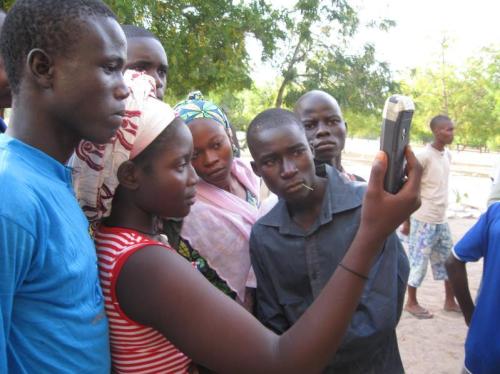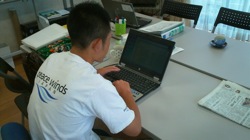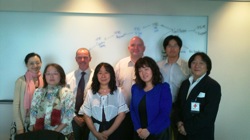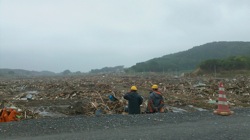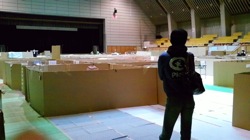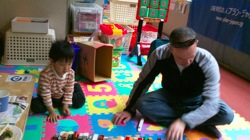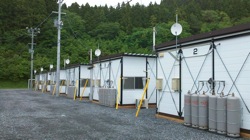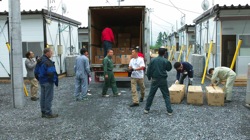It was fourteen years ago that a group of humanitarian NGOs and the Red Cross/Red Crescent movement came together and created the Sphere Project which defined minimum standards for disaster response. The cornerstone of the Sphere Handbook was the Humanitarian Charter which describes the core principles that govern humanitarian action. On top of this there are minimum standards and indicators defined that currently are utilized as a reference all disaster response.
Some of the Sphere core standard do address information sharing, like the following excerpt show:
Core Standard 1 – People Centered Humanitarian Response
People have a right to accurate and updated information about actions taken on their behalf. Information can reduce anxiety and is an essential foundation of community responsibility and ownership. At a minimum, agencies should provide a description of the agency’s mandate and project(s), the population’s entitlements and rights, and when and where to access assistance (see HAP’s ‘sharing information’ benchmark). Common ways of sharing information include noticeboards, public meetings, schools, newspapers and radio broadcasts. The information should demonstrate considered understanding of people’s situations and be conveyed in local language(s), using a variety of adapted media so that it is accessible to all those concerned. For example, use spoken communications or pictures for children and adults who cannot read, use uncomplicated language (i.e. understandable to local 12-year-olds) and employ a large typeface when printing information for people with visual impairments. Manage meetings so that older people or those with hearing difficulties can hear.
Core Standard 2 – Coordination and Collaboration
- Be informed of the responsibilities, objectives and coordination role of the state and other coordination groups where present.
- Provide coordination groups with information about the agency’s mandate, objectives and programme.
- Share assessment information with the relevant coordination groups in a timely manner and in a format that can be readily used by other humanitarian agencies
- Use programme information from other humanitarian agencies to inform analysis, selection of geographical area and response plans.
- Regularly update coordination groups on progress, reporting any major delays, agency shortages or spare capacity.
Efficient data-sharing will be enhanced if the information is easy to use (clear, relevant, brief) and follows global humanitarian protocols which are technically compatible with other agencies’ data. The exact frequency of data-sharing is agency- and context-specific but should be prompt to remain relevant. Sensitive information should remain confidential
Core Standard 3 – Assessment
Pre-disaster information: A collaborative pooling of existing information is invaluable for initial and rapid assessments. A considerable amount of information is almost always available about the context (e.g. political, social, economic, security, conflict and natural environment) and the people (such as their sex, age, health, culture, spirituality and education). Sources of this information include the relevant state ministries (e.g. health and census data), academic or research institutions, community-based organisations and local and international humanitarian agencies present before the disaster. Disaster preparedness and early warning initiatives, new developments in shared web-based mapping, crowd-sourcing and mobile phone platforms (such as Ushahidi) have also generated databases of relevant information.
Initial assessments, typically carried out in the first hours following a disaster, may be based almost entirely on second-hand information and pre-existing data. They are essential to inform immediate relief needs and should be carried out and shared immediately.
Data disaggregation: Detailed disaggregation is rarely possible initially but is of critical importance to identify the different needs and rights of children and adults of all ages. At the earliest opportunity, further disaggregate by sex and age for children 0–5 male/female, 6–12 male/female and 13–17 male/female, and then in 10-year age brackets, e.g. 50–59, male/female; 60–69, male/female; 70–79, male/female; 80+, male/female.
Sharing assessments: Assessment reports provide invaluable information to other humanitarian agencies, create baseline data and increase the transparency of response decisions. Regardless of variations in individual agency design, assessment reports should be clear and concise, enable users to identify priorities for action and describe their methodology to demonstrate the reliability of data and enable a comparative analysis if required.
One of the key issues that is hindering effective humanitarian coordination is that information is not being shared effectively between the various response organizations. Many of them don’t see value in sharing information and often feel that sharing information with others will hurt their own ability to gather funds and drive their own programs forward.
What we need is a Humanitarian Information Charter that describes the core principles that govern humanitarian information sharing and management. These should define why organizations should share and as organizations endorse this charter they commit to sharing information with each other.
It is however not enough to tell organizations to share. Information needs to be shared in such a manner that it can also be compared to other information and analyzed for trends. However during almost every recent emergency data being shared has not been compatible with data coming from other organizations. Lot of effort has been needed to convert the data into compatible formats and often the analysis is delayed so long that the data becomes irrelevant by the time it becomes available. This in return leads to organizations not seeing any value in sharing information.
It is amazing that we have had organizations like UNGIWG active for over 10 years and we have had the global clusters for over 5 years now and the IASC Task Force on Information Management active for over two years now and yet none of these have managed to agree upon standards for representing the information required to effectively coordinate disasters.
Those of us sitting in some of these bodies and having representatives in them must take the blame for not putting focus on the right things in our efforts there. If we want information sharing then we must ensure information interoperability. We ensure information interoperability by defining the data standards for how to share each type of information.
We have 20-30 types of spreadsheets and databases for each dataset that we want to capture. Now that we have finally agreed upon what the common and fundamental datasets are, then we must agree upon the format for sharing them. Once we have defined that standard, then we must actually agree to use it and nothing else.
We must then go through each cluster and ensure we define the core standards for each dataset that needs to be captured and shared to ensure effective coordination in the cluster.
Once we have the standards defined, we can actually start sharing templates and databases for collecting this data. Then we can even move forward and start sharing data capture applications and analysis modules. Then we can actually start comparing data from different organizations.
It is important for all of us to stop arguing about politics for a while and start addressing this core issue. We must understand that no data standard will be perfect and we must move towards minimum data standards and not perfect data standards.
I hereby challenge all the global cluster members as well as all the workgroup and task force members to give themselves 6 months to agree upon these standards. What we have at the end of six months will what we will use as the version 1 of the Humanitarian Information Standards. Aim for simplicity and interoperability instead of perfection and silos of data.
I am ready to work on a Humanitarian Information Charter and put together the minimum standards for humanitarian information sharing – are you?






 Last week’s launch of Virtual Kenya,
Last week’s launch of Virtual Kenya, 